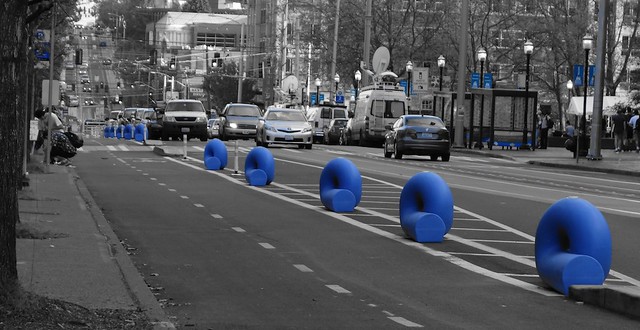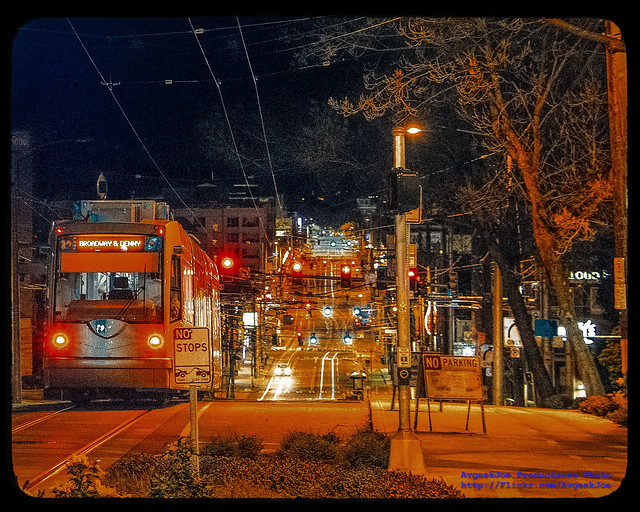
With all of the new-era Seattle Department of Transportation initiatives playing out around Capitol Hill, the neighborhood has some of the most colorful — and, sometimes, confusing — street infrastructure around. Some elements are loved. Some, not. Perhaps the most hated infrastructure of them all was hastily removed from Broadway over the weekend.
“Smurf turds gone from B’way bike lane,” was the subject line of one set of pictures emailed to CHS about the removal.

Thanks for the Smurf turd pics, Charles
It’s true. Without warning, the plastic blue bollards of the Broadway bikeway were removed and trucked off by SDOT Saturday after failing in their one critical mission over the past 18 months. You had one job, Smurf turds.

A Broadway bollard in happier times (Image: SDOT)
Designed to protect bikers using Broadway’s separated bike lanes and evoke a “needle and thread” theme with other First Hill Streetcar infrastructure, the 21 bollards along the 1.2 mile bikeway instead proved irresistible to taggers and wholly mismatched in their battle to maintain a two-foot buffer separating bikes from parked cars along the route.The bollards were manufactured of molded plastic by Landscape Forms in Kalamazoo, Michigan and were filled with hundreds of pounds of sand. After their first eight months of being pushed around and falling down on the job, the bollards were fitted with braces. That didn’t really work either.
The removal appears to mark the end of the road for the bollards though SDOT hasn’t yet said why they were removed or if there are plans to replace them. Simpler white plastic posts now line the route. Meanwhile, the plan to extend the bikeway north on Broadway along with the streetcar tracks remains in motion. But it appears the bollards won’t be around to see the start of service for the First Hill Streetcar they were intended to accompany.
UPDATE 1/11/2016 — 11:11 AM: They live! Sort of. In our assessment of the bikeway Saturday, we didn’t notice that a few stitches remain in place south of Pine. SDOT says they’re staying — but the rest? Gone for good:
The removal is permanent for the area between E Pine and E Howell streets. In that area the blue “stitches” have been repeatedly struck and damaged.
White posts, used on bike lanes around the city, will replace them. The stitches south of there will remain.




























